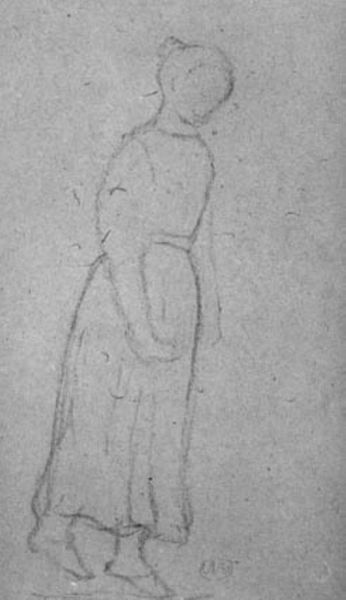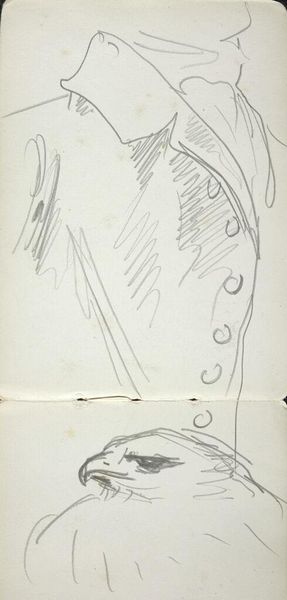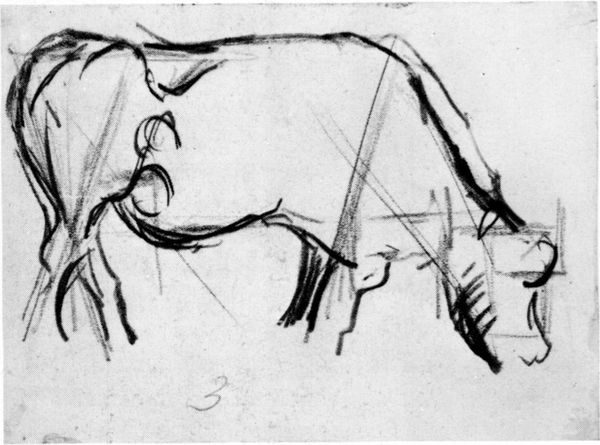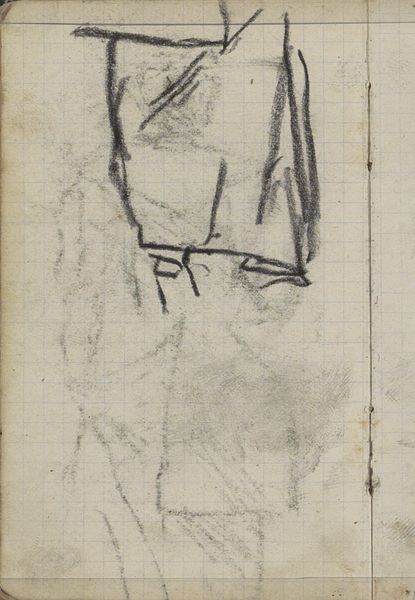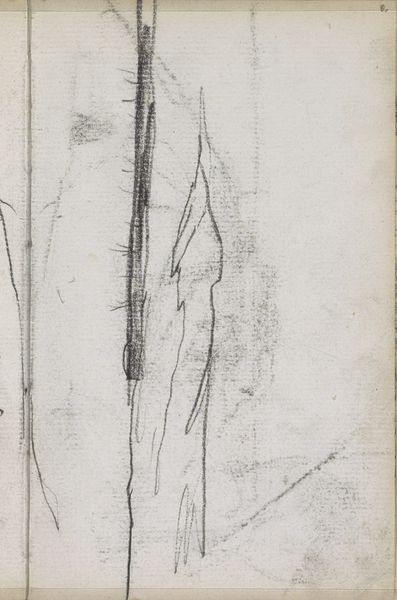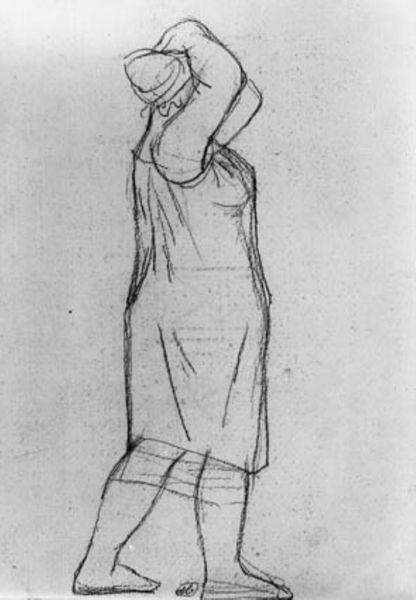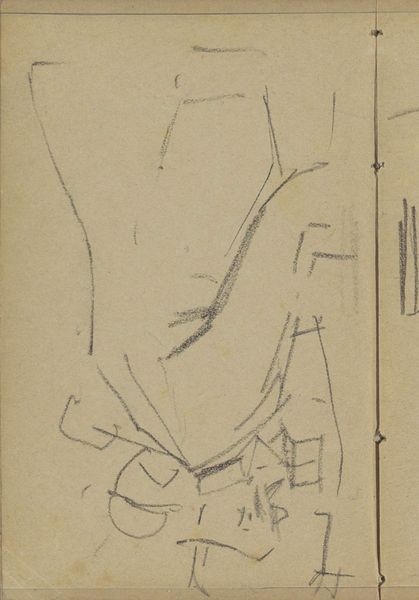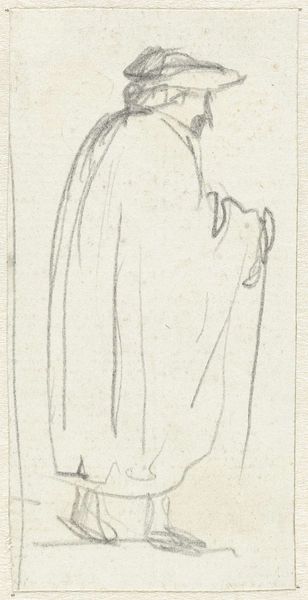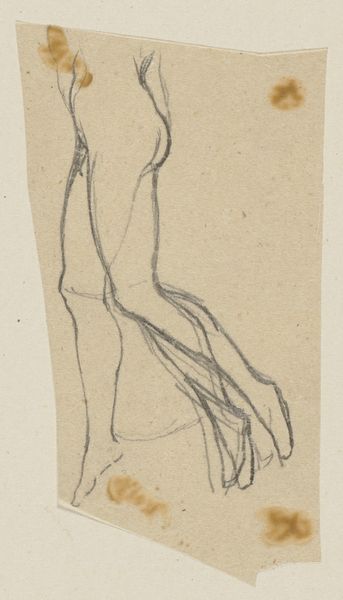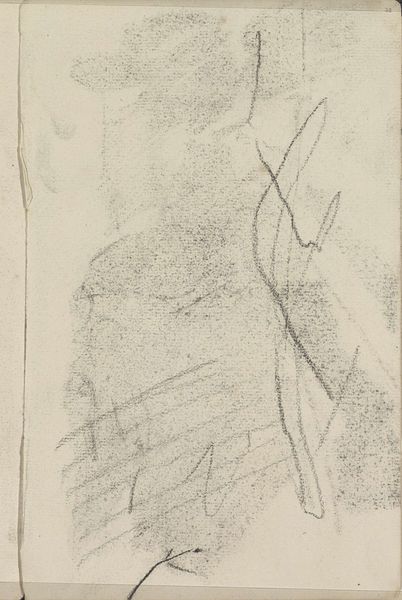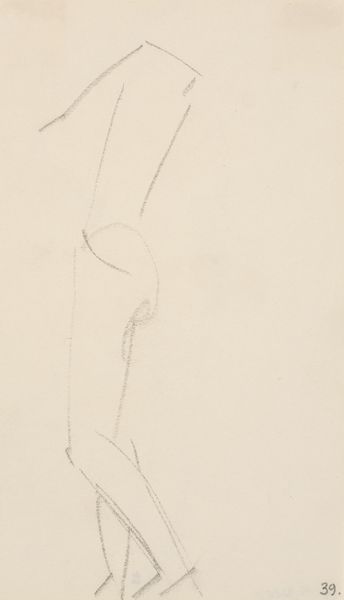
Studie af stående kvinde med højre arm løftet, halvfigur 1875 - 1878
0:00
0:00
drawing
#
portrait
#
drawing
#
impressionism
#
figuration
Dimensions: 225 mm (height) x 150 mm (width) (bladmaal)
Curator: Let’s spend some time with this study by Edgar Degas, from about 1875 to 1878. The title translates to "Study of Standing Woman with Right Arm Raised, Half-Figure." It’s currently housed here at the SMK. Editor: The immediacy of the sketch strikes me—the quick strokes capturing movement and form. There's something vulnerable, almost confrontational, about her raised arm and gaze. Curator: It's intriguing how Degas uses line, isn't it? The simplicity speaks volumes about the academic artistic practice of mastering form and volume and of representing social issues through powerful but ambiguous characters, though what social issue is difficult to ascertain in such a fragmented portrait. This artwork precedes many later ones where similar raised arms communicate rage. Editor: Exactly. While this appears unfinished, I think it is finished in the crucial respect of expressing this unnamed figure's psychology and emotions. Raising the arm evokes questions of power, resistance, and defense that would have undoubtedly lingered throughout this time, whether or not we might immediately equate the act to a particular expression or ideology. It makes me consider figures like Marianne, lifting the arm, head tilted…but that's of course a later association. Curator: The Impressionists frequently blurred boundaries between study and finished work. For Degas, studies of women were a lifelong engagement, representing modern French society. The absence of clear symbolism leaves us, however, in a very precarious place. One wonders whether there is meaning here. I would suggest it reflects both that particular woman's psychological composition but also something larger about the state of modern France. Editor: That reading provides a valuable context. While, visually, it does call to mind those broader symbolic associations of power and protest, I also feel its significance in relation to intimacy. The raw style highlights a woman simply existing, unglamorized. Degas invites us into a private, contemplative moment through these stark lines. It's a paradox. Curator: It’s precisely this delicate balance of simplicity and possible grand meanings that makes it such a compelling artwork to consider within Degas' larger production and also the historical backdrop. Editor: Ultimately, Degas leaves us contemplating individual experience alongside the social and historical weight—a testament to the complexities residing even within seemingly simple images.
Comments
No comments
Be the first to comment and join the conversation on the ultimate creative platform.
